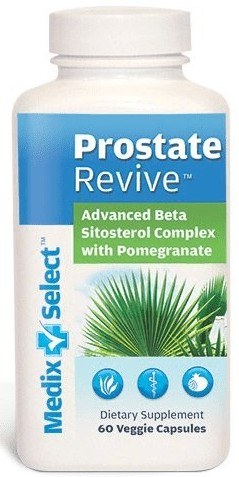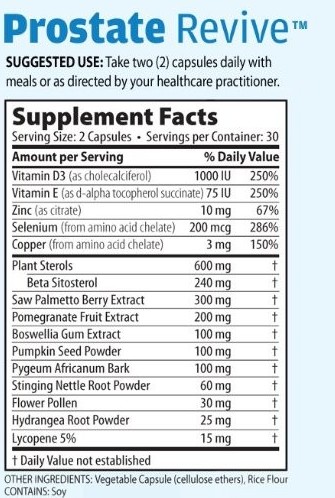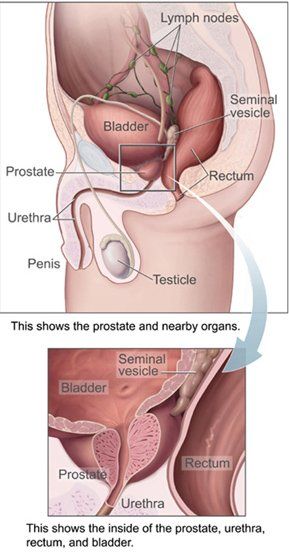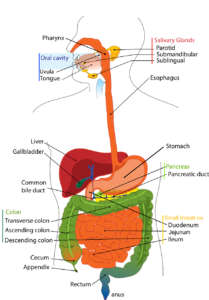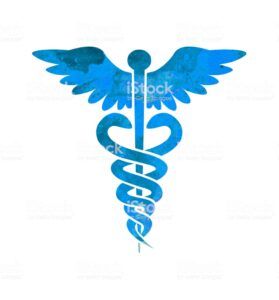Protein is something we hear a lot about. But how much do we really know about protein. The purpose of this article is to take a look at the facts about protein.
What are Proteins?
Proteins are nutrients that are essential to building muscle mass. Each gram of protein contains 4 calories. Protein makes up about 15 percent of a person’s body weight. Chemically, protein is composed of amino acids, which are organic compounds made of carbon, hydrogen, nitrogen, oxygen or sulfur. In a previous article, Dietary supplements the facts; more detail is given on amino acids.
The functions of proteins
Protein is found in all animal products, and it is essential to our lives because it’s part of every cell in our bodies.
Their importance— the importance of this nutrient, which is really just a large molecule made up of amino acids, has been known for a long time. These basic building blocks of proteins are linked together by unique chemical bonds called peptide bonds. To stress the importance of proteins, the word protein comes from the Greek word Proteios, which means of foremost importance.
They Provide Structure—I mentioned previously about amino acids being the building blocks of proteins, but it is also true to say that proteins themselves are building blocks of the body.
This leads to the first important function of protein, which is to provide structure. Structural proteins make up integral parts of the body. For example, keratin is a type of protein found in the hair, nails and skin that helps give these structures strength. That’s externally, but internally, inside the body, protein provides structure to every cell. Collagen, which is a structural protein, found in various connective tissues, provides the framework for the ligaments that hold our bones together and the tendons that attach muscles to those bones.
They Regulate Body Processes—Proteins also regulate body processes. For example, enzymes are proteins that speed up chemical reactions in the body. Without them, basic activities like breaking down the foods we eat would happen too slowly to support life. Enzymes can be thought of as proteins that shift the body’s processes into high gear, much like our morning coffee gets our day moving along.
Body processes are also influenced by hormones, which are proteins that regulate the activity of cells or organs. Hormones are like chemical messengers that carry an order from one part of the body to another, much like FedEx carries packages from point A to point B. For example, insulin is a hormone that regulates blood sugar by carrying a message to the body cells about how much sugar is present in the blood.
They Cause Biochemical Reactions—Enzymes are a type of protein that aid the thousands of biochemical reactions that take place within and outside of the cells
The structure of enzymes allows them to combine with other molecules inside the cell called substrates, which cause reactions that are essential to our metabolism.
Enzymes may also function outside the cell, such as digestive enzymes, which help digest sugar.
Some enzymes require other molecules, such as vitamins or minerals, for a reaction to take place.
Bodily functions that depend on enzymes include:
- Energy production
- Blood clotting
- Digestion
- Muscle contraction
To not have enough or improper function of these enzymes can result in disease.
They Maintain Proper pH—PH is the balance between acidity and alkalinity in the body. When your body fluids contain too much acid, it’s known as acidosis.
Proteins play a vital role in regulating the concentrations of acids and bases in the blood and other bodily fluids.
The balance between acids and bases is measured using the pH scale. It ranges from 0 to 14, with 0 being the most acidic, 7 neutral and 14 the most alkaline.
Examples of the pH value of common substances include:
- pH 12: Soapy water
- pH 10: Milk of magnesia
- pH 7.4: Human blood
- pH 5: Black coffee
- pH 4: Tomato juice
- pH 2: Stomach acid
A variety of buffering systems allows the bodily fluids to maintain normal pH ranges.
A constant pH is necessary, in view of the fact that even a slight change in pH can be harmful or potentially deadly.
One way the body regulates pH is with proteins. An example is hemoglobin, a protein that makes up red blood cells. Hemoglobin binds small amounts of acid, helping to maintain the normal pH value of your blood. The other buffer systems in the body include phosphate and bicarbonate.
They Balance Fluids—Proteins regulate body processes to maintain fluid balance.
Albumin and globulin are proteins in our blood that help maintain our body’s fluid balance by attracting and retaining water.
If we don’t eat enough protein, our levels of albumin and globulin eventually decrease.
Consequently, these proteins can no longer keep blood in your blood vessels, and the fluid is forced into the spaces between your cells. As the fluid continues to build up in the spaces between the cells, swelling or edema occurs, particularly in the stomach region.
This is a form of severe protein malnutrition called kwashiorkor that develops when a person is consuming enough calories but does not consume enough protein. However, Kwashiorkor is rare in developed regions of the world and occurs more often in areas of starvation.
They boost Immune Health—Proteins help form antibodies, to fight infection. Antibodies are proteins in the blood that help protect the body from harmful invaders like bacteria and viruses. When these foreign invaders enter the cells, the body produces antibodies that tag them for elimination. Without these antibodies, bacteria and viruses would be free to multiply and overwhelm the body with the diseases they cause.
Once the body has produced antibodies against a particular bacteria or virus, the cells never forget how to make them. This allows the antibodies to respond quickly the next time a particular disease agent invades your body. As a result, the body develops immunity against the diseases to which it is exposed. Vaccines function on this principal.
They Transport and Store Nutrients—Transport proteins carry substances throughout the bloodstream — into cells, out of cells or within cells.
The substances transported by these proteins include nutrients like vitamins or minerals, blood sugar, cholesterol and oxygen. For example, hemoglobin, mentioned earlier, is a protein that carries oxygen from your lungs to body tissues. Glucose transporters (GLUT) move glucose to your cells, while lipoproteins transport cholesterol and other fats in your blood. Protein transporters are specific, meaning they will only bind to specific substances. For example, a protein transporter that moves glucose will not move cholesterol.
Proteins also have storage roles. Ferritin is a storage protein that stores iron.
Another storage protein is casein, which is the principal protein in milk that helps infants grow.
They Provide Energy—Proteins can supply the body with energy.
Protein contains four calories per gram, the same amount of energy that carbs provide. Fats supply the most energy, at nine calories per gram. However, the last thing your body wants to use for energy is protein since this valuable nutrient is widely used throughout your body.
Carbs and fats are much better suited for providing energy, as your body maintains reserves for use as fuel. Moreover, they’re metabolized more efficiently compared to protein. In fact, protein supplies your body with very little of its energy needs under normal circumstances.
However, in a state of fasting (18–48 hours of no food intake), your body breaks down skeletal muscle so that the amino acids can supply you with energy.
Your body also uses amino acids from broken-down skeletal muscle if carbohydrate storage is low. This can occur after exhaustive exercise or if you don’t consume enough calories in general.
In summary, protein can serve as a valuable energy source but only in situations of fasting, exhaustive exercise or inadequate calorie intake.
It looks like protein has many roles in the body. It helps repair and build the body’s tissues, allows metabolic reactions to take place and coordinates bodily functions. In addition to providing the body with a structural framework, proteins also maintain proper pH and fluid balance.
Finally, they keep the immune system strong, transport and store nutrients and can act as an energy source, if needed.
Collectively, these functions make protein one of the most important nutrients for the health of the body.
How to get Protein in your diet
As you can see, getting enough protein is important for optimal health. For this reason, the recommended daily intake (RDI) for protein is 50 grams per day.
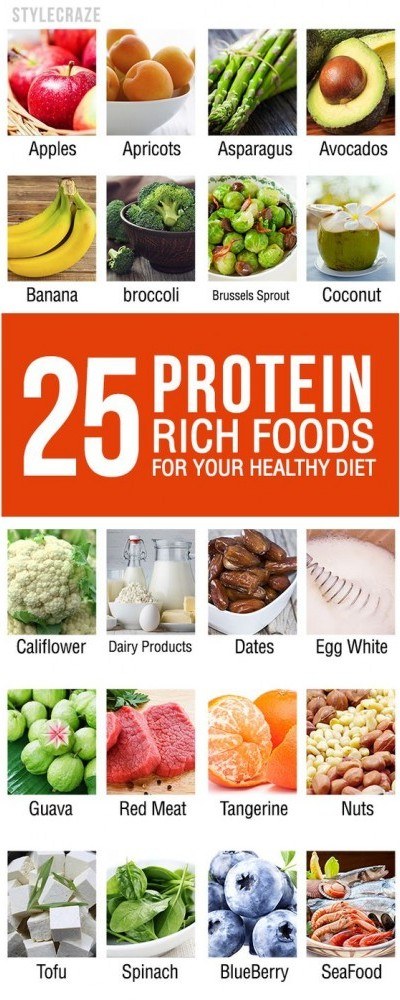
However, some researchers believe that many people should be eating significantly more than this amount.
A high protein intake can help with weight loss, increase muscle mass and improve health, to name a few.
Here are some easy ways to eat more protein.
Cheese Snacks—Snacks are a good way to get extra protein into your diet, as long as you choose the right types. Many common snack foods are very low in protein, such as chips, pretzels and crackers. To give an example, a 28-gram (1-oz) serving of tortilla chips has 137 calories but only 2 grams of protein.
In contrast, the same amount of cheddar cheese contains 7 grams of protein, along with 20 fewer calories and 4 times as much calcium.
Additionally, cheese doesn’t seem to raise cholesterol levels much, even in people with high cholesterol. In fact, cheese may even benefit heart health.
Eggs—many breakfast foods are low in protein, including toast, bagels and cereals.
Although oatmeal contains more protein than most cereals, it still only provides about 6 grams in a typical 1-cup serving. On the other hand, three large eggs provide 19 grams of high-quality protein, along with important nutrients like selenium and choline.
What’s more, several studies have shown that eating eggs for breakfast reduces appetite and keeps you full for several hours, so you end up eating fewer calories later in the day.
Eating whole eggs can also modify the size and shape of your LDL (“bad”) cholesterol particles in a way that may decrease heart disease risk.
Have a Protein Shake for Breakfast— A shake or smoothie can be a great breakfast, depending on the ingredients. Many smoothies contain a lot of fruit, vegetables or juice, but little protein. Protein powders make it easy to create a high-protein shake. There are several types on the market, including whey, soy, egg and pea protein. Whey protein powder has been studied the most and seems to have an edge over the others when it comes to helping you feel full. One scoop (28 grams) of whey powder provides about 20 grams of protein, on average.
Here is a basic whey shake recipe. To boost the protein content even more, use more protein powder or add peanut butter, almond butter, flaxseeds or chia seeds.
Whey Protein Shake
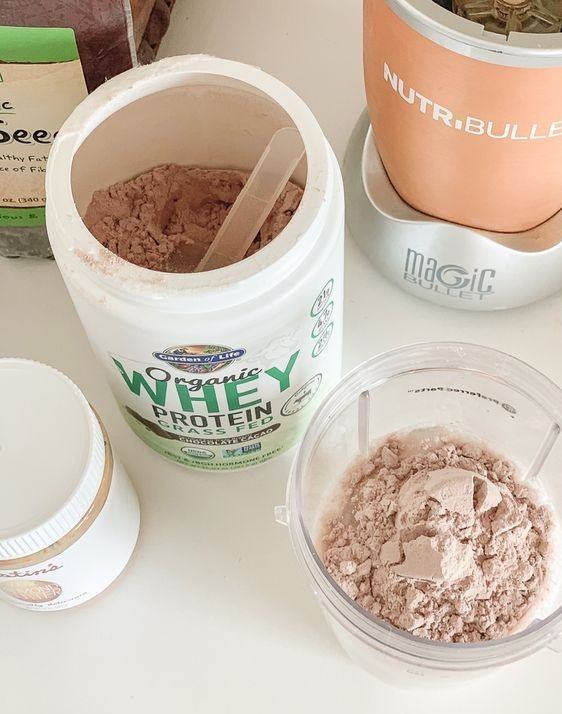
- 8 oz (225 grams) unsweetened almond milk.
- 1 scoop of whey powder.
- 1 cup fresh berries.
- Stevia
or another healthy sweetener, if desired. - 1/2 cup crushed ice.
Combine all ingredients in a blender and process until smooth.
Almonds—Almonds are extraordinarily healthy. They’re high in magnesium, fiber and heart-healthy monounsaturated fat, yet low in digestible carbs. Almonds also contain 6 grams of protein in a 28-gram (1-oz) serving, which makes them a better source than most nuts. Although a serving of almonds contains around 167 calories, studies have shown that your body actually absorbs only about 129 of those calories because some of the fat isn’t digested.
So as a suggestion, sprinkle a few tablespoons of chopped almonds over yogurt, cottage cheese, salads or oatmeal to increase your protein intake and to also add flavor and crunch.
Greek Yogurt—Greek yogurt is a versatile, high-protein food. An 8-oz serving provides 17–20 grams of protein, depending on the brand which is about twice the amount in traditional yogurt. Greek yogurt is made by removing whey and other liquids to produce a richer, creamier yogurt. Research shows Greek yogurt increases the release of the gut hormones GLP-1 and PYY, which reduce hunger and make you feel full. In addition, it contains conjugated linoleic acid (CLA), which has been shown to promote fat loss in some studies. Greek yogurt has a tangy flavor that goes well with berries or chopped fruit. It can also be used as a substitute for sour cream in dips, sauces and other recipes.
Add Protein to Your Salads—Salads are have plenty of vegetables that provide vitamins, minerals and antioxidants that help protect from disease. However, they often contain only a few grams of protein, which will most likely lead to hunger after an hour or two.
To add protein to your salad, top it with any of the foods below. A 100-gram (3.5-oz) serving of these foods will give you the following amounts of protein:
- Cheese: 22 grams.
- Tuna: 26 grams.
- Salmon: 25 grams.
- Chicken or turkey breast: 30 grams.
It’s good to Include a High-Protein Food with Every Meal—when it comes to protein, it’s not just the total amount you take in every day that matters. Getting enough at each meal is also important. Several researchers recommend consuming a minimum of 20–30 grams of protein at each meal. Studies show that this amount provides fullness and preserves muscle mass better than smaller amounts eaten throughout the day.
Select foods from this list of delicious high-protein foods in order to make sure you meet your needs at every meal.
Select Leaner, Slightly Larger Cuts of Meat—Selecting leaner cuts of meat and increasing portion sizes slightly can significantly boost the protein content of your meal. What’s more, your meal may even end up being lower in calories. For example, compare these two steaks:
- Rib eye steak (fatty): 18 g protein and 274 calories per 100 g (3.5 oz).
- Top sirloin steak (lean): 24 g protein and 225 calories per 112 g (4 oz).
[See the difference?!]
Bottom Line: choosing leaner cuts of meat and slightly larger portions is an easy way to increase your protein intake. The leaner, the meaner! LOL!
Add Peanut Butter with Fruit—Fruit is rich in antioxidants, nutrients and fiber. However, it’s very low in protein. Peanut butter is a delicious, high-protein food with a creamy texture that complements firm fruits such as apples and pears. By spreading 2 tablespoons of peanut butter on sliced fruit will boost the total protein content by 8 grams. Additionally, studies suggest that peanut butter may decrease appetite, reduce blood sugar levels and promote heart health.
Eat Lean Jerky—Lean jerky is a convenient way to get more protein into your diet. But, it is important to choose a healthy type.
Many types of jerky contain sugar, preservatives and various questionable ingredients. They’re also frequently made from lower-quality meat. Some jerky and “snack sticks” come from grass-fed beef, bison and other free-range animals. Choosing jerky from grass-fed animals will provide better-quality meat with higher amounts of healthy omega-3 fats. Lean jerkies or snack sticks contain about 7 grams of protein per 28 grams (1 oz). They can often be stored for several months without refrigeration and are ideal for travel.
Cottage Cheese—Cottage cheese is a tasty food that’s also very high in protein. A one-cup (225-gram) serving contains 25 grams of protein and 220 calories. A 2015 study found cottage cheese to be as filling and satisfying as eggs. What’s more, the full-fat type is a good source of CLA, which may promote fat loss and lead to improvements in body composition. Cottage cheese is delicious on its own. But you can also try it with chopped nuts or seeds, cinnamon and stevia or another sweetener for a quick breakfast. Additionally, smaller amounts of cottage cheese make a great snack.
Bottom Line: Cottage cheese is a versatile, high-protein food that makes you feel full and may help improve body composition.
Canned Fish—canned fish is a fantastic way to boost protein intake. It requires no refrigeration, so it’s great for travel. It can be enjoyed as a snack or with a meal. Fatty fish like salmon, sardines, herring and mackerel are also excellent sources of omega-3 fatty acids, which can fight inflammation and improve heart health. A 100-gram (3.5-oz) serving of canned fish contains between 20–25 grams of protein and 150–200 calories.
Ideas for serving canned fish include combining it with healthy mayo, serving it on top of a salad or eating it straight from the can.
Tip: Eating protein first at meals can help you feel full and keep blood sugar and insulin levels from rising too high.
The bottom line
Getting enough protein is very important. A high protein intake can help you lose weight and gain muscle, while improving your body composition and metabolic health. Fortunately, this is easy to do if you follow the simple tips above.
In today’s busy society, it isn’t always easy to get the nutrients we need. That’s where dietary supplements come in handy. Amazon (paid link)
has a vast selection of protein supplements that can help in getting the protein one needs. To observe and purchase click here. (paid link)
Please feel free to leave any question or comment below.
Good Health!!
